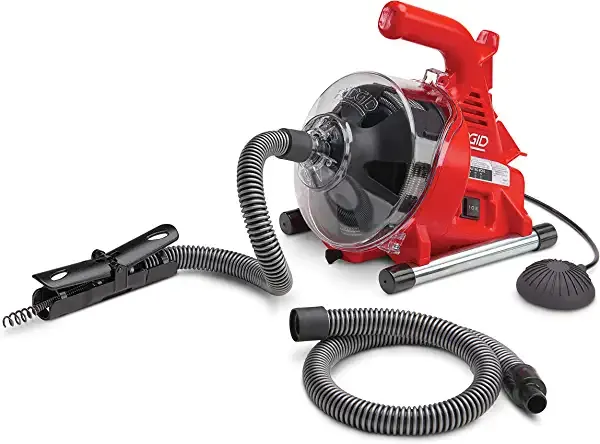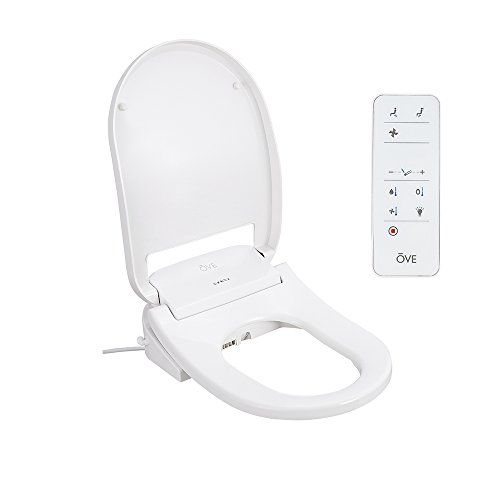How To Fix Water Dripping From Bathroom Fan
Are you tired of dealing with the annoying problem of water dripping from your bathroom fan? Well, you’ve come to the right place! In this article, we will guide you through the process of fixing this issue and ensuring a dry and comfortable bathroom environment.
First things first, it’s important to identify the source of the water dripping. Is it condensation buildup or a leak? Once you have determined the cause, you can take appropriate action. Checking for condensation buildup and ensuring proper ventilation are crucial steps in preventing water from dripping.
Additionally, inspecting and cleaning the fan regularly will help maintain its efficiency and prevent any blockages.
Sealing any leaks or cracks in the bathroom is another essential task to keep water from entering and causing damage. If necessary, consider installing a dehumidifier to control moisture levels effectively.
However, if the problem persists despite your efforts, it may be time to consult a professional for further assistance. Stay tuned for the rest of the article, where we will provide you with detailed instructions on how to fix water dripping from your bathroom fan.
Key Takeaways
- Identify the source and causes of water dripping from the bathroom fan
- Ensure proper ventilation in the bathroom to prevent condensation and moisture buildup
- Regularly clean and maintain the fan to prevent water accumulation
- Seal any leaks or cracks in the bathroom and check if the fan is properly sealed and mounted
Identify the Source of the Water Dripping
To identify the source of the water dripping from your bathroom fan, you’ll need to carefully examine the area and determine where the leakage is originating from. Start by checking the fan housing and the surrounding ceiling for any visible signs of water damage. Look out for wet spots, discoloration, or mold growth.
If the leakage is occurring during or after showering, it could be due to excessive moisture buildup in the bathroom. In such cases, the fan may not be adequately ventilating the area, leading to condensation and subsequent water dripping. Make sure to clean and maintain your bathroom fan regularly to prevent water damage. This includes removing any dust or debris that may be blocking the fan blades, as well as ensuring that the fan is properly connected to the ductwork.
By following proper bathroom fan maintenance, you can minimize the chances of water dripping and potential damage.
Check for Condensation Buildup
One potential cause of the annoyance could be a buildup of condensation in your bathroom. Condensation occurs when warm, moist air comes into contact with a cold surface, such as the bathroom fan. To prevent condensation and the subsequent water dripping, it is important to identify and address the common causes of condensation.
| Common Causes of Condensation |
|---|
| Inadequate ventilation |
| High humidity levels |
| Cold exterior temperatures |
| Improper insulation |
To prevent condensation, ensure that your bathroom is properly ventilated. This can be achieved by using an exhaust fan or opening a window during and after showers. Additionally, reducing humidity levels by using a dehumidifier or opening bathroom doors can help. Insulating the bathroom walls and ceiling can also prevent condensation by maintaining a consistent temperature. By addressing these common causes of condensation, you can effectively fix the issue of water dripping from your bathroom fan.
Ensure Proper Ventilation
Proper ventilation in your bathroom is crucial for preventing excess moisture buildup. To ensure proper ventilation, start by checking if your bathroom fan is functioning correctly. Make sure it’s clean and free from any obstruction that may hinder its performance.
A properly functioning fan will help remove moisture from the air, reducing the chances of condensation and water dripping. Additionally, consider installing a timer switch or humidity sensor for your bathroom fan. This’ll allow the fan to automatically turn on when the humidity levels rise above a certain threshold, ensuring efficient moisture control.
It’s also recommended to keep the bathroom door and windows open when showering to promote air circulation. By implementing these measures, you can effectively manage bathroom humidity and prevent water dripping from your fan.
Inspect and Clean the Fan
Take a moment to inspect your fan and give it a thorough cleaning – you’ll be amazed at how fresh and revitalized your bathroom will feel.
To troubleshoot water dripping from your bathroom fan, follow these maintenance tips:
- Start by turning off the power to the fan to avoid any accidents.
- Remove the fan cover and check for any signs of debris or dust buildup.
- Use a soft-bristle brush or a vacuum cleaner to gently remove the dirt and dust from the fan blades and housing.
Regular cleaning of your bathroom fan is essential to prevent water accumulation and potential damage. By following these troubleshooting tips and incorporating a regular maintenance guide, you can ensure proper functioning of your fan and eliminate water leakage.
Enjoy a dry and comfortable bathroom experience!
Seal any Leaks or Cracks in the Bathroom
Ensure a dry and cozy atmosphere in your bathroom by sealing any leaks or cracks, creating a sanctuary where you can relax and unwind without any unwanted surprises. Repairing bathroom leaks is crucial to prevent water damage and maintain the integrity of your bathroom.
Start by thoroughly inspecting the walls, ceilings, and floors for any signs of leakage. Look out for discoloration, water stains, or peeling paint, as these are indicators of leaks. Once you locate the source, carefully seal any cracks or gaps using silicone caulking or waterproof sealant. Pay special attention to areas around pipes, vents, and windows, as they’re common culprits for leaks.
Additionally, don’t forget to check the bathroom fan itself. Ensure that it’s properly sealed and securely mounted to prevent water from seeping through. By taking these proactive measures, you can effectively prevent water dripping from your bathroom fan and avoid costly water damage.
Consider Installing a Dehumidifier
Consider installing a dehumidifier in order to create a more comfortable and moisture-free environment in your bathroom. A dehumidifier works by removing excess humidity from the air, reducing the chances of water dripping from the bathroom fan. When choosing a dehumidifier, opt for one with a humidistat, which allows you to set and maintain the desired humidity level. This ensures optimal moisture control and prevents condensation buildup. Additionally, using a moisture barrier, such as a vapor barrier paint or waterproof membrane, can help to further prevent water leakage. Implementing these measures will not only fix the issue of water dripping from your bathroom fan but also improve the overall air quality and prevent mold and mildew growth. Enhance your bathroom experience by investing in a dehumidifier and moisture control solutions.
| Pros | Cons |
|---|---|
| Effectively removes excess moisture | Initial cost of purchasing a dehumidifier |
| Improves air quality | Requires regular maintenance and cleaning |
| Helps prevent mold and mildew growth | Consumes electricity |
| Creates a more comfortable environment | May generate noise |
Consult a Professional if the Issue Persists
If the issue continues to persist, it may be wise to seek the expertise of a professional to find a solution. A consultation with a professional can help troubleshoot the problem and determine the underlying cause of the water dripping from the bathroom fan. They have the knowledge and experience to identify any potential issues with the fan’s installation, ventilation system, or condensation buildup.
Additionally, a professional can perform a thorough inspection to ensure that there are no hidden leaks or structural damage that may be contributing to the problem. By consulting a professional, you can receive accurate guidance on how to fix the issue and prevent any further damage or complications.
Remember, it is important to address this problem promptly to avoid potential mold growth or electrical hazards.
Frequently Asked Questions
How can I identify the source of the water dripping from my bathroom fan?
To identify the source of water dripping from your bathroom fan, check for any leaks or condensation around the fan housing. Prevent water dripping by ensuring proper insulation and ventilation in the bathroom.
What should I do if there is condensation buildup in my bathroom?
To prevent condensation buildup in your bathroom, ensure proper ventilation by using an exhaust fan or opening a window. Control moisture by wiping down surfaces, using a dehumidifier, and repairing any leaks promptly.
How can I ensure proper ventilation in my bathroom to prevent water dripping from the fan?
To ensure proper bathroom ventilation and prevent water dripping from the fan, make sure your bathroom has an exhaust fan with sufficient airflow capacity. Regularly clean the fan and ducts to remove any obstructions that could hinder its performance.
What steps should I take to inspect and clean my bathroom fan?
To inspect and clean your bathroom fan, start by turning off the power and removing the fan cover. Use a vacuum or brush to remove dust and debris. Then, wipe the fan blades with a damp cloth. Reinstall the cover and restore power.
How do I seal any leaks or cracks in my bathroom that may be causing water to drip from the fan?
To seal any leaks or cracks in your bathroom that may be causing water to drip from the fan, you can use various sealing techniques. Common causes of leaks include damaged caulking, loose pipes, or gaps in the ventilation system.
Conclusion
To conclude, if you’re experiencing water dripping from your bathroom fan, it’s crucial to identify the source of the issue. Check for condensation buildup and ensure proper ventilation to minimize moisture.
Inspect and clean the fan regularly to prevent clogs or obstructions. Seal any leaks or cracks in the bathroom to prevent water seepage.
If the problem persists, consider installing a dehumidifier to regulate humidity levels. Lastly, if all else fails, it’s advisable to consult a professional for expert assistance.











.jpg)








